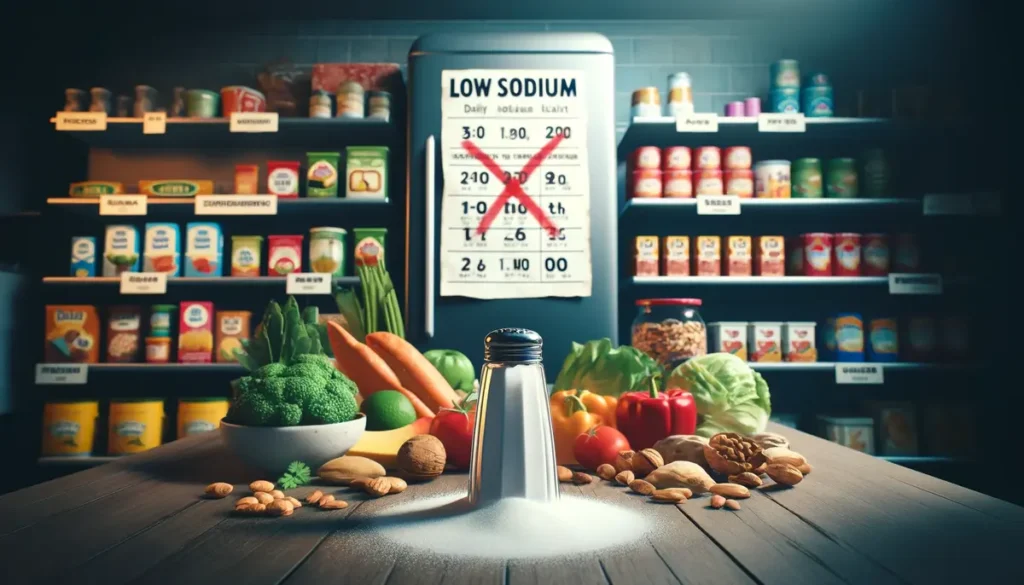
A low sodium diet is a must for numerous people who are managing high blood pressure, heart health, kidney diseases, or in patients who struggle with fluid retention.
Definition of a Low Sodium Diet
It can consume no more than 2,000 milligrams of salt each day. Nevertheless, this number is subject to variations based on the individual’s health needs. Typically, the average American consumes around 3,400 mg of sodium, mostly from processed food. Thus, these require heavy form of dietary control.
Benefits of Eating Low Sodium
The manner by which a low Sodium diet benefits an individual’s health are numerous.
- It reduces blood pressure: Sodium influences high blood pressure by causing the body to retain excess fluid, which in turn put more pressure on the heart. Reducing sodium can reduce blood pressure by a large percentage.
- Eating lesser sodium decreases the potential for a heart disorder: Eating too much sodium is a risk factor for heart disease since sodium increases blood pressure and possibly damages the arterial.
- Eating low sodium makes the kidney function optimally: High sodium levels overwork the kidney. Thus, reducing Sodium prevents kidney disease or assists in the management of kidney disease since it reduces the kidney workload.
- Reducing the level of fluid retained: Eating less sodium is excellent for people with CHF or some liver disease, as it causes less bloating or fluid retention.
Low Sodium Diet Tips
- Understanding food labels: it is necessary to find out and use nutritional labels. Look for such words as low-sodium, sodium-free, no salt added, or unsalted.
- Fresh over processed: it is always good to eat fresh vegetables and fruits processed items as deli meat, canned soup, and package meals.
- Cooking at home: home-cooked meals help you take control of the amount of sodium you consume. Use herbs, spices, and no-salts flavoring in place of salt
- Cautiously eating out: meals in restaurants are high in sodium. Request the preparation of dishes without salt added to waiters.
Low Sodium Diet: Practical Tips
- Fresh Ingredients: Substitute fresh cuts of meat for processed meat and finally cut down bacon and sausage as staples; choose fresh produce.
- Experiment with Spices: Add flavor without adding more salt with garlic, basil, cumin, a squeeze of lime, or other various herbs and spices. For more resources on herbs, you might check Mayo Clinic.
- Read Labels Carefully: Anything with 140 mg or more of sodium per serving is off limits. Usually, the major offenders are processed foods—frozen, boxed, or canned.
- Rinse Cans: Running vegetables or beans under water thoroughly reduces the addition of sodium.
- Beware of ‘Hidden’ Sodium: Don’t forget that other sources do not only arise from the salt shaker but also come from soy sauce, barbecue sauce, ketchup, baking soda, and antacids.
Meals that are Naturally Low in Sodium
- Breakfast: Oversalted bacon and eggs? Remove bacon and use less salt on the eggs. Try oatmeal with sliced berries and a dash of cinnamon or a green smoothie (spinach, banana, unsweetened almond milk).
- Lunch: Instead of a salty sandwich or wrap, try hummus + avocado or a Greek yogurt lunch with mixed greens, cherry tomatoes, olive oil, and lemon juice as dressing.
- Dinner: Avoid sauces or use low sodium substitutes. Opt for grilled salmon with dill and lemon zest, steamed broccoli with unsalted butter, and quinoa. Consider a vegetable stir fry with low-sodium broth, more veggies, and tofu, and sesame oil on top of quinoa or brown rice.
Maintaining a low-sodium diet can be hard when eating out or shopping at stores. Support from a dietitian or caregiver is crucial to ensure all of the low sodium while also maintaining a healthy diet plan.
*This article is only for informative purpose consult your dioecian for proper information.
